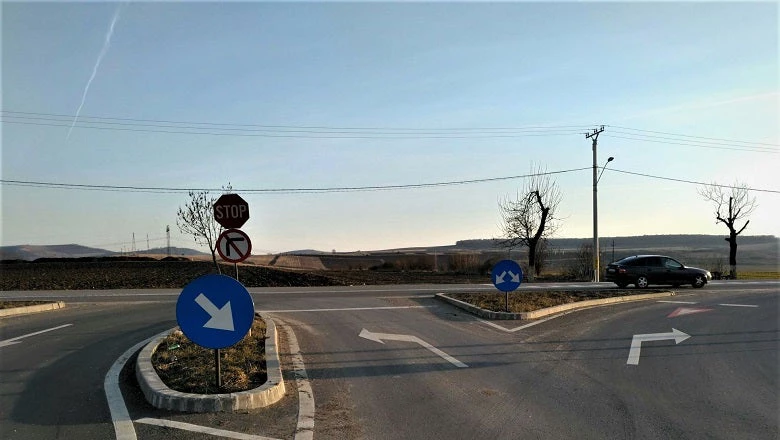
Ask any resident of Romania whether their roads are safe and they will answer a resounding “no”. In 2016, fatalities on Romania's road reached 1,913 - more than double the number of fatalities compared with the EU-28 average of 925. Romania’s average fatality rate over the past six years has consistently been twice higher than the EU-28 average, registering around 91 fatalities per million people, compared to 51 for the rest of the EU.
Alarmingly, Romania’s fatality rate keeps increasing - reaching 95 per million people in 2016. In addition to the human tragedy this situation represents a huge economic cost. According to the General Transport Master Plan, costs of fatal road crashes in Romania are alarmingly high - estimated to be at least 1.2 billion euro (5.4 billion RON) per year.
Fatality rates in the country are high primarily because of an increase in motorized vehicles on the streets as a result of surging economic growth, a failure of drivers to comply with speed limits, a seeming inability to adjust their speed to driving conditions, and a road infrastructure system that is unforgiving to human error.
So what does it take to reduce road casualties?
Some of the most common practices in reducing car crashes on roads include installing median and road-side barriers, introducing tactile median and roadside line markings to wake up drowsy drivers, and improving curve delineation to reduce off-road crashes.
For roads where there are no median or roadside barriers, speeds should not exceed 80 km/h. For intersections in high speed zones, installing a roundabout to control vehicle speed and directional impact forces or installing well designed traffic signals, will reduce vehicle casualties. Speed limit at intersections without traffic lights should not exceed 50 km/h.
To reduce pedestrian casualties, good practices include reducing speed limits to 40 km/h or less in pedestrian zones, installing good public lighting and signals for pedestrian crossings, pedestrian fencing to guide pedestrians to a highly visible crossing point or to prevent pedestrians crossing a hazardous road, as well as installing plenty of visual warnings for drivers.
Unfortunately, most of these recommended countermeasures for roads, intersections, and pedestrian zones are rarely noted on Romania’s roads. Furthermore, this situation is exacerbated by complicated, non-transparent, outdated, and inflexible legislation, which is coupled with weak enforcement of traffic laws and a lack of structured training programs for road professionals.
All of these add up to significant challenges that Romanians face on the road every day.
Romania’s new National Road Safety Strategy. Why is it important?
Recognizing the urgency of addressing the challenges of road safety in Romania, the Romanian government passed a new National Road Safety Strategy last year. The Strategy sets an ambitious target of halving Romania’s 2010 fatality rate by 2020.
To contribute to this target, the Romanian National Company for Road Infrastructure Management (CNAIR), has asked the World Bank to provide technical assistance and undertake a broad review of its Road Safety Infrastructure Management processes and activities expected to improve road safety.
The technical assistance was aimed at improving road infrastructure safety using modern Safe System principles and practical approach based on verified international good practices. The main Safe System principle recommended also for adoption in Romania is to recognize that humans make errors and, as a result, the road system should be designed in such a manner that it compensates for, or eliminates, human error and minimizes impact of road crashes on human body.
If a crash is inevitable, the system should reduce crash severity to survivable limits. This means that the road system designers and managers should build adequate safeguards into the road safety system to prevent injury-causing crashes.
What’s next on the agenda?
Following a thorough assessment of the road infrastructure safety management system in Romania, the World Bank put forward a list of key recommendations focused on reducing road casualties by improving the road infrastructure management system and focusing on improvements of most dangerous sections of roads. These include:
- Establishment and operationalization of a Black Spot database for identification of dangerous road sections and implementation of a Black Spot Treatment Program with secure multi-annual funding budget;
- Compilation and publication of a publicly accessible catalogue of ‘safer road’ designs based on Safe System principles for urban and interurban roads, which should include effective crash countermeasures along with corresponding road safety audit and inspection tools and updated road safety technical regulations and standards;
- Improving accessibility to the Police crash database for road safety stakeholders and improving intelligence feedback to CNAIR on infrastructure related crashes;
- Setting up a training program for all professionals and road safety stakeholders for ‘safer road’ design based on Safe System principles.
At an individual level, adopting a cautious behavior and complying with road traffic rules and markings is critical for our safety and for the safety of others in traffic.
Drive safely!


Join the Conversation